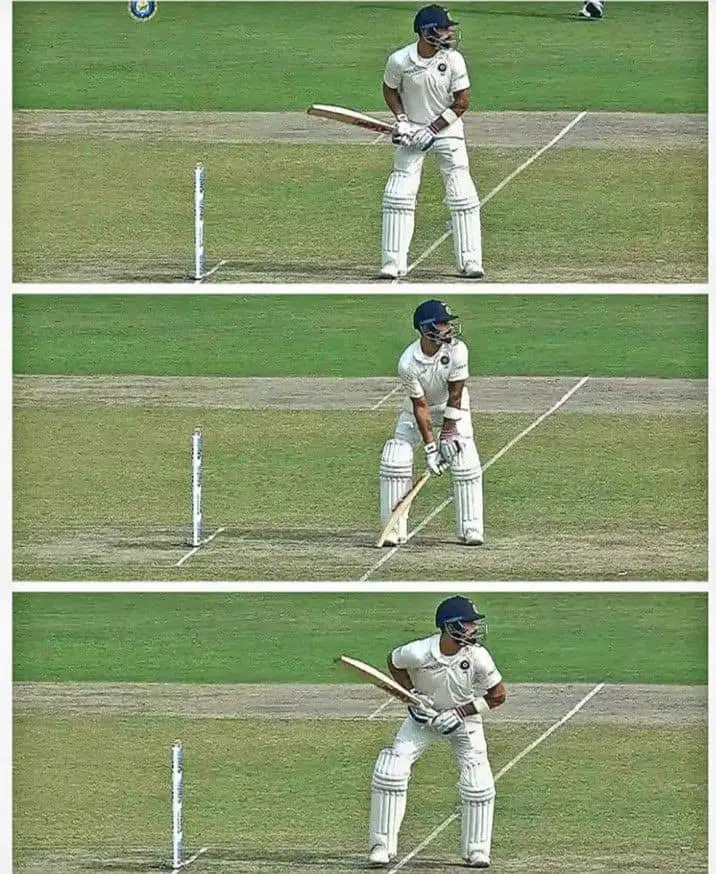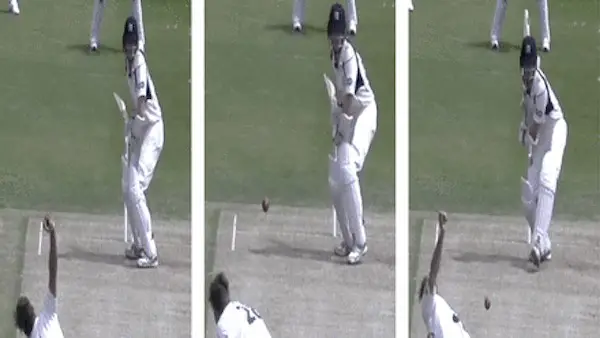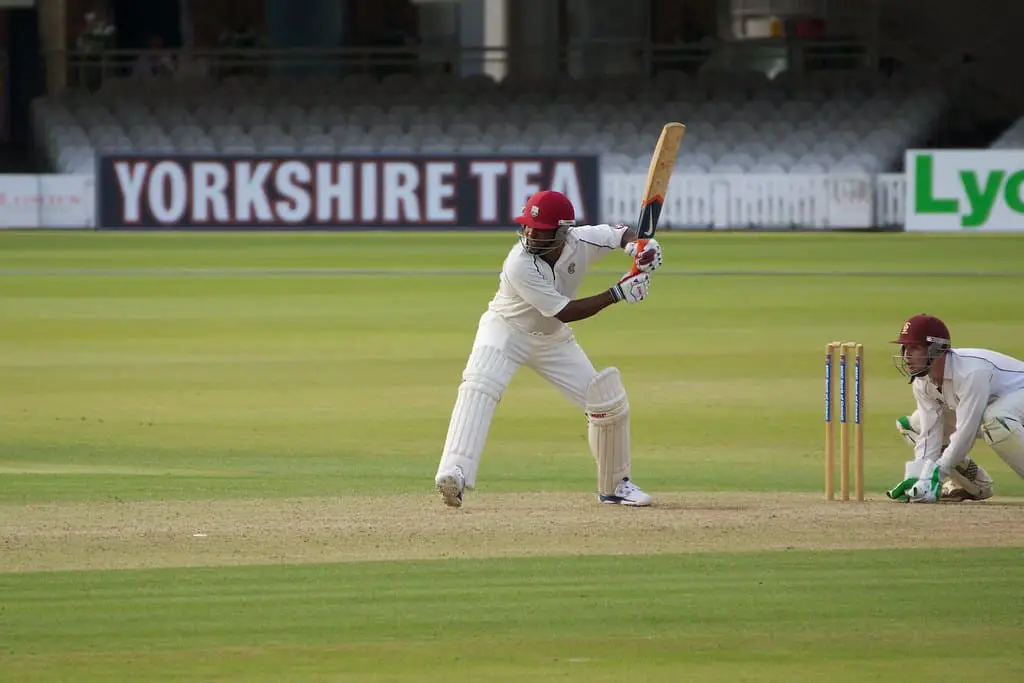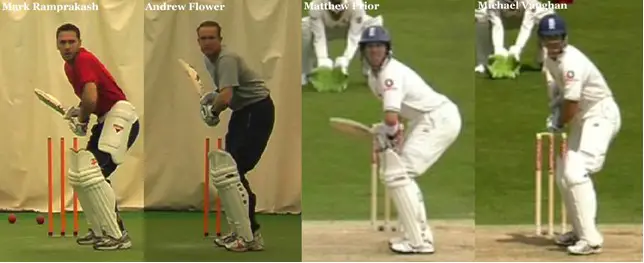One of the most beautiful sights in cricket is when a batsman, like Brian Lara or Yuvraj Singh, lifts the bat high behind the body as the bowler runs in to deliver the ball and then the bat comes down steadily to meet the ball at the right moment and dispatches the ball to the boundary. That’s the impact of backlift. Let’s talk in detail about it in the following article.
A High Backlift in Cricket means that a batsman lifts the bat high before he swings it to hit the ball such that the toe of the bat reaches the shoulder height of the batsman. A higher backlift helps generate more acceleration in the bat swing, and thus generate more power in the shot.
So why do some players prefer high backlift? Do you always have to employ the same backlift? Why some players seem to bat with a straight backlift while others have angled backlift? Let’s understand this in detail below.
What is a Back-lift in Cricket?

Back-lift is how a batsman lifts the bat in preparation for striking the ball as the bowler takes the run-up.
Ideally, the bat should be raised as vertically as possible, some coaching manuals suggest that the bat should be slightly angled from the perpendicular, pointing the face of the bat in the direction of the first or the second slip.
There are other back-lift techniques as well, which we will see later in the article.
What are the Different Back-lift Techniques?
There are two common back-lift batting techniques in cricket – Straight Batting Back-lift Technique (SBBT) and Lateral Batting back-lift technique (LBBT).
1. Straight Batting Back-lift Technique (SBBT)
In the straight back-lift technique, the bat is lifted straight towards the stump or the first slip, while the face of the bat points towards the wicketkeeper or the ground. As per various studies conducted around the world, most cricket coaches recommend SBBT.
2. Lateral Batting Back-lift Technique (LBBT)
In the lateral batting back-lift technique, the bat is lifted ‘laterally’ in the direction of second slip, while the toe of the bat and face of the bat points directly towards the off-side (between slips and point). Some batsmen like Sangakkara and Ricky Ponting used this technique.
Difference between Back-lift and BackSwing in Cricket
Some batsmen display two distinct bat movements before striking the ball. The movements happen between the release of the ball by the bowler and the ball reaching about the middle of the pitch.
The back-lift happens when the ball is released (left-most image below) and then the backswing happens until the ball is half-way down the pitch (middle and right-most image below)

Importance of High Back-lift
Batsmen tend to adopt either high or low back-lift, depending on the comfort level and batting style. However, in the era of Twenty-20s, batsmen like to play attacking games and score at higher strike rates; a high back-lift effectively helps them doing so.

To understand how the high back-lift is advantageous while playing attacking shots, we re-visit some of the basics of physics.
A high back-lift takes advantage of Newton’s second law of motion:-
The law states that the Force exerted by an object is equal to its mass multiplied by acceleration.
When the batsman strikes the ball with high back-lift, it essentially enables the batsman to make the impact with greater force due to more acceleration generated from the bat.
It helps the batsman generate more power behind the ball. Another situation where the high back-lift helps is while reacting to the fast deliveries bowled by the express pacers.
Other the other hand, there are some drawbacks of high back-lift. For some batsmen, the high back-lift could be problematic against the yorker or the swinging ball when it comes to bringing their bat down in time and at a specific spot. A batsman must read the bowler and situation to change the backlift appropriately.
Role of Back-lift in Striking the Ball Correctly
Back-lift plays an important role in order to strike the ball correctly.
However, good back-lift alone is not enough. You also need to have the right grip, stance, in addition to the back-lift.
Grip, Stance and Back-lift are quite closely related to each other and they directly affect the way the batsman strikes the ball. If you are young or relatively new to cricket, learning about these three points will help you improve.
1. Grip
The grip is how the batsman holds the bat handle. There are two types of grips namely V-shaped and O-Shaped grips.
V-shaped Grip
For the ‘V’ shaped grip, both hands are placed on the handle close together, with the left hand on the top for a right-hander, and vice versa. Both the palms should create a ‘V’ shape as shown in the image. This grip makes it easier to attack with straight and vertical-batted shots.
O-shaped Grip
The ‘O’ shaped grip helps more in case of cross-batted shots, but it isn’t used as much as the ‘V’ shaped grip.
2. Stance
The stance is the position in which the batsman stands anticipating the ball. The batsman should ensure that the bodyweight is evenly distributed on the two legs as the faulty stance may lead to foot, knees, and back injuries, due to extra load on either of the legs.
3. Back-lift
Each batsman has a unique batting style, due to the difference in grip, stance, and back-lift. The back-lift can vary depending on the batting style, the position, the role, and the natural play. Apart from obeying the basics, the key principle of the back-lift is that the batsman must feel comfortable.
Technically, the bat should be lifted with the upper hand, while the elbow should bend, and not be positioned too far from the body. The position of the eyes and head should remain still while preparing for the ball.
Note:
It is important to avoid these mistakes –
- Do NOT lift the bat too late. The bat should be lifted when the bowler is in action
- Many youngsters usually lift the bat with incorrect orientation, either it is too straight or pointing as far as the gully.
Tips for Power Hitting using Right Stance and High Back-lift

For the desired results in cricket, the right technique is the key. I am sure, the below-mentioned points will aspiring cricketers to adopt the right stance and the back-lift. Don’t miss the image where you will see one of the best batsmen ever, Sachin Tendulkar, exactly following these points.
TIP 1 – The feet should be comfortably apart – neither too far nor too close.
TIP 2 – Ensure that there is no pressure on the heels or the toes.
TIP 3 – Slightly flexing the knees could be helpful to distribute the weight uniformly.
TIP 4 – Avoid bending too much, as it may cause back injuries in the long run.
TIP 5 – The front shoulder should be pointing straight towards the stumps at the opposite end, or Mid On.
TIP 6 – Elbow should not be too stiff. Be relaxed.
TIP 7 – The head should be still. It should not tilt on either side.
TIP 8 – The upper hand should be resting on the front thigh.
Additionally, the video below will help you further understand the back-lift and the downward backswing action of your bat.
A few Batsmen with the Biggest Back-lift
Let’s take a look at some of the successful International batsmen, across different eras, who used high backlift in batting.
1. Graham Gooch
Graham Gooch, fondly known as the run-machine had exaggerated back-lift style. With 8,900 test runs, he was England’s leading run-scorer till the record was broken in 2015 by Alastair Cook.
2. Brian Lara
The stylish batsman was famous for his high back-lift and backfoot shuffle in the crease. With over 20,000 international runs, he is the only batsman to score 400 in a Test match to date.
3. Lance Klusener
Lance Klusener had the skills to decimate any bowling attack with his unusually high back-lift. His contribution in the 1999 World Cup cannot be forgotten, when he was also the Man of the Tournament.
4. MS Dhoni

The high back-lift empowered Dhoni to play those lofted shots, including the trademark helicopter shots. Nonetheless, he used to smartly switch to shorter back-lift whenever required. For instance, while playing Lasith Malinga in the 2011 World Cup, he used shorter back-lift to counter his yorkers.
5. Yuvraj Singh
How can we forget the man who had hit 6 sixes to Stuart Broad in 2007 ICC T20 World Cup? He was also the Man of the Tournament in the 2011 ICC Cricket World Cup.
Watch Yuvraj Singh hitting 6 sixes in an over of Stuart Broad in the video above. Do make a note of the high back-lift deployed by Yuvraj.
Final Thoughts
Cricket is essentially a very simple game if the basics are followed. The backlift is one of the basics that help a batsman reach his potential while batting.
As it turns out, many players do not start looking for a particular backlift, to begin with. They sort of developing it as they go ahead in batting. There is no silver bullet here. Each player has his own style.
It is futile to ask players to change their backlift midway through their careers. It would prove disastrous. Imagine someone telling Steve Smith to change his batting style to conform to the norms. Players must find their own method to get the desired backlift and must practice hard in the nets to perfect it.



